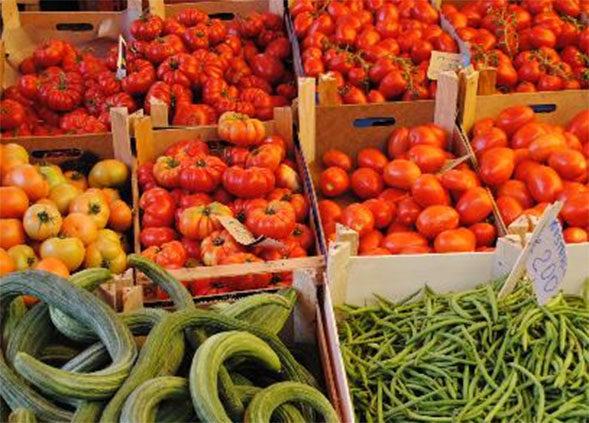Off the Beaten Course: GEOG 340
This course explores where food comes from, how it is produced and the way it impacts health and the environment.

Off the Beaten Course is a series that delves into SDSU's course catalog to share unique and non-traditional classes.
Course title: Geography of Food (GEOG 340)
Professor’s name: Pascale Joassart-Marcelli
1. What inspired you to create this course?
I have always been passionate about food and curious about its origin and its role in shaping cultures and bringing people together. To me, food is a perfect window to expose students to geography, which is essentially about the relationships between people and their environment. I also believe that food is a very important aspect of our lives. It says a lot about who we are, where we come from and who we want to be. Until recently, it has not been taken very seriously as a topic of academic inquiry.
Increasingly people are asking important questions about where our food comes from, how it is produced, the way it impacts our health and our environment. Several years ago, I decided to create a general education course called Geography of Food to both expose students to geography and work together to answer these big questions about our food system.
2. What can students expect to learn from this course?
The course is divided into four parts. We begin by exploring the production of food. In this part of the course, we identify the main actors in the global food system and investigate geographic patterns of food production at the global, national and regional scales. We study the impacts of large-scale corporate and industrial farming on farm workers, animals, and the environment. We discuss alternative production arrangements including organic farming and community gardens.
In the second part of the course, we turn our attention to the distribution of food and the supply chains connecting farmers to consumers. We also learn about food retailing and marketing, and investigate issues of access to food.
In the third part, we focus on the consumption of food with an emphasis on the social, emotional and symbolic role food plays in defining places and cultures. We study how certain dishes and food practices are associated with specific identities and how globalization transforms these meanings. We also discuss malnourishment, obesity and hunger and critically explore current policies to address these issues, both in the United States and abroad.
The last section of the course investigates the preparation of food. We explore home and professional kitchens as relational spaces where differences are (re)produced and pay particular attention to the role of the media in representing chefs, cooks and food preparation workers.
3. What makes this course different from similar courses?
As far as I know, there are no similar courses offered at San Diego State University. Of course, there are courses in nutrition and in public health that cover food topics, but the focus tends to be on the nutritional qualities of food and healthy eating behavior.
This course offers a systemic perspective that is grounded in geography and social sciences and helps contextualize these issues in social, cultural and political-economic processes operating at local, regional and global scales. Geography is a very diverse discipline that includes what is known as physical and environmental geography, human geography (e.g., social, cultural, economic, urban) and geographic information science. This course borrows from all of these fields.
4. Is there one day on the syllabus for this course you most look forward to? If yes, why?
When I first taught the course, it was as a special topic with a small group of students. I was able to lead several fieldtrips, including a walking tour of City Heights’ food landscape. This was a great a way to question the concept of a food desert and explore multiple and alternative sources of food.
Now that the class has become much larger, we cannot do those types of fieldtrips anymore, but I offer other guided opportunities for students to explore the local food landscape.
One of my favorite class meetings is when we discuss the environmental impacts of meat production. Students feel very strongly about these issues, but have not always considered the arguments “for” or “against” meat in a systematic way. I love to see how the discussion goes on after class.
5. What’s your favorite thing about teaching this course?
I truly enjoy teaching this course and I am encouraged by the feedback I get from students who often contact me months after the courses ended to tell me about the impact it had on their personal and professional lives. Many talk about how it changed their relationship to food and motivated them to become more active in promoting a just and sustainable food system. This is why I became a teacher!



